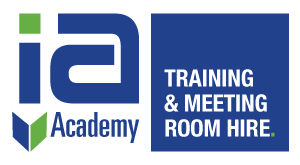What standards operate in this industry?

If any company wants to compete in the international market they need to ensure their products meet a particular set of standards that guarantee a level of quality.
With a global market there needs to be some sort of worldwide standardisation for industrial fittings. Fittings are tightly regulated by a number of codes related to country of origin and materials.
There are two main types of industry standards national (EN and DIN) and international (ISO IEEE). There are also regulations directly related to particular industries and trade standards. Any standard depends on being recognised by the majority of those involved in that industry.
Different types of standard
International Standards
International Organisation of Standards (ISO) is the largest global quality management organisation. Based in Geneva this non-government institution is highly respected and many of the standards it sets are legally recognised worldwide.
Institute of Electrical and Electric Engineers (IEEE) is a professional technical organisation dedicated to the innovation and improvement of engineering, technology and computing. An international institute its standards are often adapted by national and international organisations.
International Electrotechnical Commission (IEC) has its headquarters in Geneva. An international organisation it publishes standards on electrical and electronic technologies.
National Standards and Trade Associations
British Standards Institution (BSI) is the recognised UK standards body. As the world’s first national standards organisation BSI standards are recognised worldwide as well as nationally. Standards certified by the BSI have the BS prefix.
European Standard (EN) have been ratified by the one of the related European Standards Organisations. These standards are voluntary but many laws make compliance with them compulsory.
DIN Standards, the German Institute for Standardisation, sets standards for products, manufacture and development often used with the EN and also ISO.
American National Standards Institute (ANSI) is the US standards system responsible for overseeing the coordination of US standards with international standards.
British Compressed Air Society Ltd representing manufacturers, distributors and users of compressed air products. They have an active input into proposed UK and European standard and legislation.
National Fluid Power Association (NFPA) works with manufacturers, distributors and suppliers of hydraulics and pneumatics products to develop training and a forum to discuss how to advance the industry.
British Fluid Power Association (BFPA) is the UK equivalent of the NFPA. The BFPA provides guidelines and directives for the pneumatic and hydraulic industries as well as training.
BFPA Training – Indanc Academy
Industrial Ancillaries Academy runs a number of courses in partnership with the BFPA, designed for anyone who works with hydraulics.
Foundation Safety Course
Basic hydraulics health and safety course.
Hose Assembly Skills Course
2 day course on hose assembly procedure, including routing and installation.
Hose Integrity, Inspection and Management Course
Health and safety assessment training including risk analysis and competence.
Small Bore Tubing Integrity Course
Safety training in the manufacture of small bore tubing assemblies.
Call us on 01246 242050 or get in touch via our Contacts page to find out more details about our courses and course dates.
Other related articles
Hydraulic Hose Safety Issues
Find out how important safety is for the hydraulic hose industry. How and why the majority of accidents happen and how to prevent them.
What is the difference between pipes and tubes?
Do you know what the difference is and does it matter? The answer is ‘yes’ especially if you work in engineering or construction. Find out why it matters and when you would use tube or pipe by reading this article.
What is the difference between NPT and BSP fittings?
There are a number of different sizing standards used throughout the world. Do you know which one you should use and what the difference is between them. No. Then read this article and find out.
What is the difference between hydraulics and pneumatics?
They both convert fluid pressure to mechanical motion. The major difference is that one works with air and the other with liquids. Find out which is which and more with this article.
The principles of pipe and tube bending
What happens to metal when you bend it? Find out about bending processes and problems from this article.
A guide to identifying fittings and connections. Essential for the correct connection of systems.
A quick guide to the life of a hose from purchasing, installing, operating and replacement.
